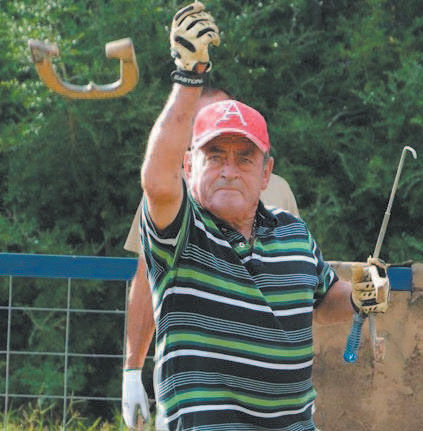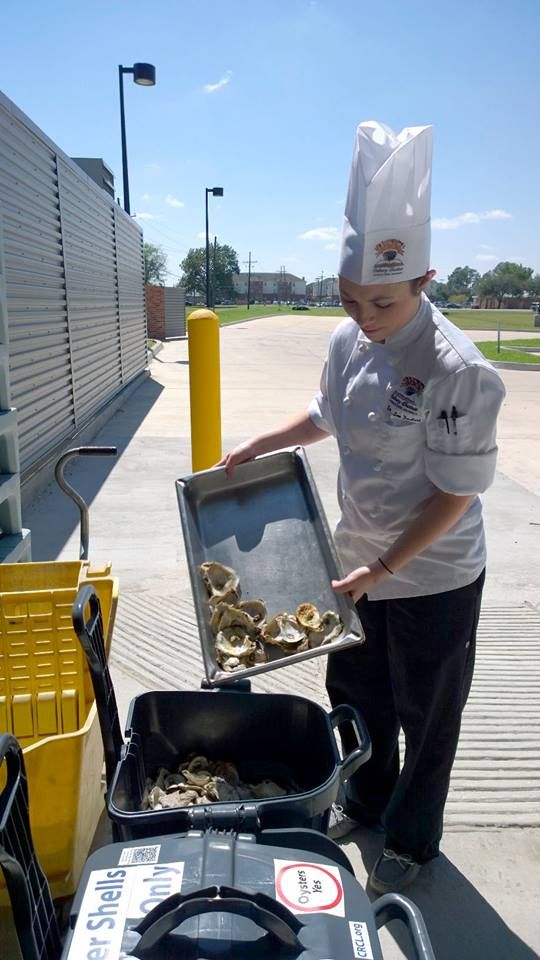
Pitch with the pros at Kemper Williams Park in Patterson
October 21, 201552nd State Representative District to choose between 2
October 21, 2015Take a good, hard look at the plate of charbroiled oysters in front of you the next time you sit down to enjoy the Louisiana delicacy. It is a lot more than just a delicious meal; it’s also the basis of an effort to restore the Bayou State’s shorelines, one that is now expanding to the Barataria region.
Launched in June 2014 by the Coalition to Restore Coastal Louisiana, a non-profit organization dedicated to driving rebuilding action, the Oyster Shell Recycling Program repurposes shells, which will be utilized to construct oyster reefs off the coast of the state. The project, supported by funding from Shell, began with just 12 New Orleans-based restaurants and in 16 months, has grown to include 25 Big Easy restaurants and Nicholls State University, the first organization outside of the city to join the cause.
The recycled shell is vital to the functioning of wetlands ecosystems unique to Louisiana, the coalition’s director of communications, Jimmy Frederick, said. Currently, there is a 60 percent shell deficit in the state simply because most of the oysters harvested don’t return to Gulf waters.
“That means we’re really losing a lot of habitat for oysters and the idea behind this is that we try to get as many oyster shells back into the water that we possibly can,” he explained. “One, for shoreline protection and also to help sustain the oyster fishery a little bit better.”
Since its inception, the coalition has become the largest program of its kind in the country and has collected more than 800 tons of shells, product that in Spring 2016 will be used to construct a half-mile oyster reef in Biloxi Marsh, acres of wetlands situated near the Gulf of Mexico at the crook of Louisiana and Mississippi. The coalition is currently drawing up design and engineering plans with the help of The Nature Conservancy, an organization that aims to protect ecologically important lands globally. That reef, Frederick explained, is vital to protecting the rapidly disappearing coastline and sustaining a species that accounts for approximately one third of the nation’s oyster supply.
“The main idea is that we start protecting the shoreline of the Biloxi marsh by using this oyster reef to break the wave action,” Frederick said. “It’s called a living shoreline because eventually it will build sediment behind it, it will create land over time and it will also allow oysters to have something to hold onto when they are growing. It’s not exactly tied to new oyster production, but over time, it will definitely help the oyster to grow and from there we can expand it.”
Shells at New Orleans restaurants are picked up throughout the week by coalition partner Phoenix Recycling and brought to a storage site in Buras owned by the Louisiana Department of Wildlife and Fisheries.
Volunteers will gather Nov. 9 and 20 at the Buras site to bag the first of the shells that will eventually be deployed to Biloxi.
Because Buras is an almost three hour drive from Thibodaux, Nicholls stores its contribution of shells, direct from dishes created at the university’s Chef John Folse Culinary Institute, at the nearby Nicholls Farm. In both locations, shells are laid out to cure, a cleansing process that takes about six months, according to Dr. Allyse Ferrara, a Nicholls biology professor spearheading the university’s program involvement.
“We thought we could start something in this area where we could have a source of shell that is closer to Barataria-Terrebonne for use in restoration projects,” Ferrara said. “Since 60 percent of shell is lost to the state and never returned, we figured we could help make a dent in that … When you get the shell, there’s going to be little bits of muscle from the oyster, any tissue that is left from the oyster, you can have algae or other things on the outside of the shell. That material has to rot away before it can be used in a restoration project because the baby oysters, the spat, will settle on the shell and they are stuck there basically. That’s where they are going to be for the rest of their life. If they were to land on a piece of cheese or something, that cheese could rot away and then the spat would be dislodged and would be lost.”
The university’s efforts are kept small at the moment due to repairs that must be made on a bridge allowing access to the back of the expansive farmland. Once completed, Ferrara said Nicholls would be able to increase its storage capacity and hopes to get local restaurants on board as well.
Frederick said the coalition hopes to continue expanding the program into other areas like Baton Rouge and that Nicholls’ desire to be part of the effort is the first step in doing so.
“It really highlights the fact that even the smallest little thing such as something as great as eating oysters can really help our coastline,” he explained. “Nicholls has been very kind to us, they’ve been an incredible partner over the years for us. They really add a new dimension to our efforts to restore the coast and hopefully get more and more people involved because it is really an opportunity for every Louisianan and every person that is involved in the coast to help restore the coast.”•








